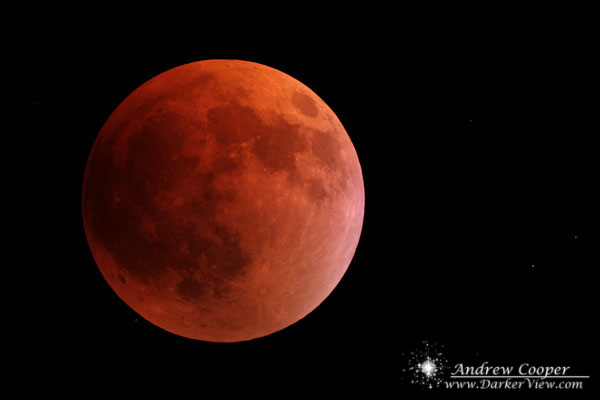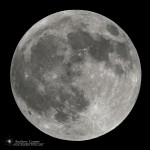Just a reminder that a total lunar eclipse will occur tomorrow night, on the evening of April 14th.

When you want to see the stars, find someplace dark
Just a reminder that a total lunar eclipse will occur tomorrow night, on the evening of April 14th.

A total lunar eclipse will occur on the next full Moon, April 14th. The eclipse will be visible across much of the western hemisphere, including the west coast of North America and across the Pacific. This is an excellent eclipse for observers here in Hawai’i, the entire eclipse will be visible from start to end.

The Moon will be thoroughly submerged in the umbra, the darkest part of the Earth’s shadow, with an umbral magnitude of 1.29. The Moon will not pass directly through the umbra, but rather through the northern section, thus the north pole of the Moon will remain somewhat brighter, even at maximum.
Observing a total lunar eclipse requires no special equipment, simply the desire to look up. The most useful piece of equipment will be a reclining chair or some other method of staying comfortable while watching the sky. A pair of binoculars or small telescope can provide beautiful views of the Moon during an eclipse. Photography is somewhat more challenging, but not that difficult. Focal lengths of around 1000mm will fill the field of most DSLR cameras allowing photos like that shown here.
| Penumbral Eclipse Begins | 18:53:37 HST | 04:53:37 UT |
| Partial Eclipse Begins | 19:58:19 HST | 05:58:19 UT |
| Total Eclipse Begins | 21:06:47 HST | 07:06:47 UT |
| Greatest Eclipse | 21:45:40 HST | 07:45:40 UT |
| Total Eclipse Ends | 22:24:35 HST | 08:24:35 UT |
| Partial Eclipse Ends | 23:33:04 HST | 09:33:04 UT |
| Penumbral Eclipse Ends | 00:37:37 HST | 10:37:37 UT |
The next total lunar eclipse in October will also be visible across the Pacific region. It will occur somewhat later in the night and be slightly brighter, only 1.16 umbral magnitude. With two good lunar eclipses 2014 is a treat for sky watchers across the western hemisphere. An annular eclipse is visible later in April in Australia and the South Indian Ocean, a partial solar eclipse is visible in late October across North America.
Tomorrow morning, December 11th, a nice trio will see three bright objects create a close 6° triangle. Lowest of the three will be Mercury, shining brightly at -0.6 magnitude, at about 18° elevation at sunrise. About 4° above Mercury will be a nice 4% illuminated crescent Moon. Above the Moon will be Venus, shining at -3.9 magnitude it will be very hard to miss. About 16° above the trio you can find Saturn, making three bright planets in the dawn. This conjunction should be worth setting the alarm clock early for.

A penumbral lunar eclipse will be visible from western North America, across the Pacific to much of Asia. This is a fairly minor eclipse, with the Moon passing through the outer penumbral shadow of the Earth. A careful observer will note the light of the full Moon dimmed. As the Moon will not enter the darker umbral shadow the effects of this eclipse will not be obvious.

During this new moon a total solar eclipse will sweep across Northern Australia and the South Pacific, ending before reaching the west coast of South America. None of this eclipse will be visible from Hawai’i.